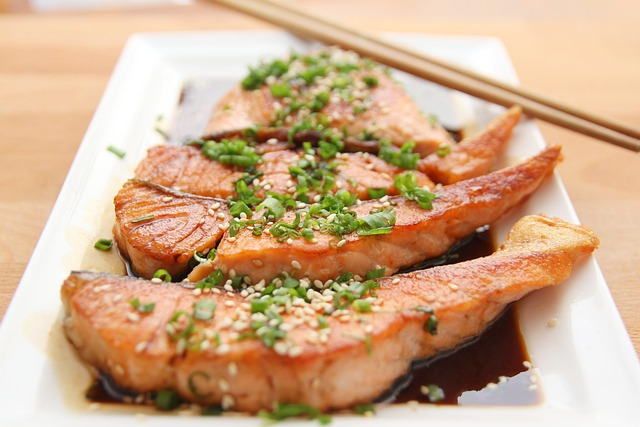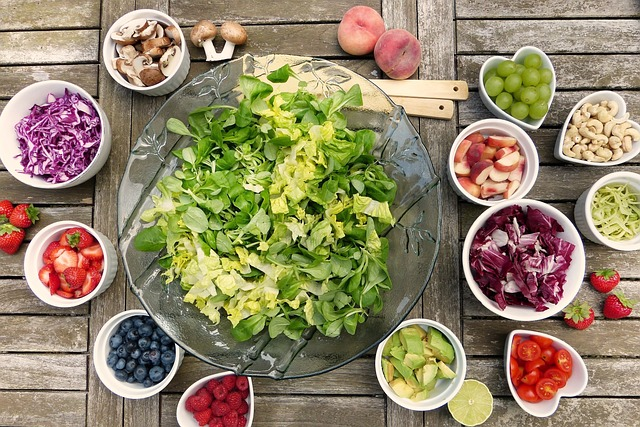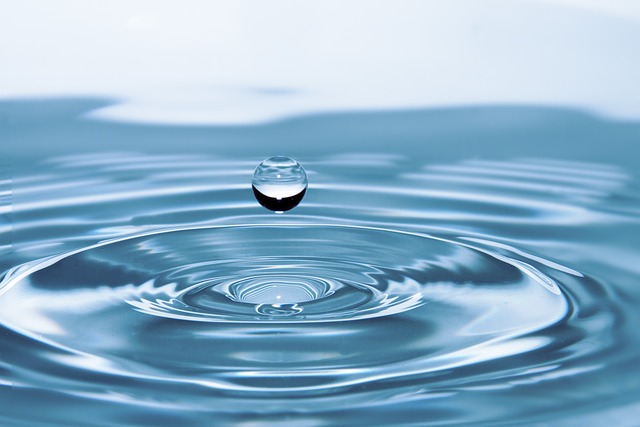It’s true: some people do build muscle faster. Maybe it’s genetics, but it could also be that they’ve just figured out the right formula for what works for them best. We are all different on multiple levels. You and a friend could hit the gym for 6, 8, or 12 weeks and do the exact same plan, but at the end your friend gained more muscle and lost more fat. While you’re stoked for your friend, it can be frustrating. But don’t let it get you down, it happens to a lot of us. Read on for our take on how to build muscle — and fast.
Before we begin, let’s assume you’re already following a workout plan. If you’re not, that’s objective number one. We have several options for a variety, check out this piece with 35+ FREE workout plans for different goals and ability levels. Everything starts and progresses from there.
The Basics of Muscle-Building
Building muscle is a journey rooted in understanding the basics of muscle hypertrophy, which is the scientific term for muscle growth. At its core, muscle building is about more than just lifting weights; it’s a complex process involving progressive overload, hormonal responses, and targeted exercise.
Progressive overload is fundamental to muscle gain. This principle involves gradually increasing the amount of weight or resistance in your strength training routine, challenging your muscles to adapt and grow stronger. Lifting weights isn’t just about picking up heavy objects; it’s about engaging your muscles in a way that stimulates growth.
When you lift weights, especially when focusing on major muscle groups like the chest, back, and legs, you create micro-tears in the muscle fibers. The process of repairing these tears, coupled with adequate rest and nutrition, leads to muscle growth. This is where dietary protein plays a crucial role, providing the amino acids needed for muscle protein synthesis. (Which we will get into later on)
Resistance training triggers the release of anabolic hormones like testosterone and human growth hormone, which are key players in muscle development and recovery. It’s not just about the amount of weight you lift, but also about the correct form, the range of motion, and the mind-muscle connection that ensures you’re effectively targeting the intended muscle groups.
Another aspect of muscle building is ensuring a holistic approach. Focusing on major muscles is important, and incorporating exercises that engage multiple muscle groups and promote overall balance and strength can lead to more comprehensive muscle development. This approach not only aids in building muscle mass but also enhances overall body strength, functionality, and reduces the risk of injury. Remember, muscle building is not a one-size-fits-all process; it requires patience, consistency, and a tailored approach that considers your unique body composition, goals, and fitness level.
Here’s some things to try if you’ve gotten stuck:
1. Focus Strength to Build Muscle
Not all workout plans are created equal. While there are many multi-purpose ones that you can use for building muscle or losing weight, sometimes you might need something a bit more specific, something that focuses on getting stronger or specifically focused on muscle growth. Working towards “getting ripped” can get exhausting or even lead to overtraining. And high-intensity interval training (HIIT) and circuit training is different than strength-training. For example our 10×10 workouts, the high-intensity Hurricane series, and Built for the Beach v3.0 could be overwhelming on your body. Take a look at something like our 3-week Super-3 workout plan or the 4-week Pre-Cut workout plan for a shift exclusively towards muscle building or muscle growth. You notice a change of exercise types, sets, reps, and rest. Strength plans or muscle building plans typical have less exercises, more focus on compound lifts, lower reps, and longer rest periods. This might be the change you need to build muscle faster.
2. Adjust Your Workout Frequency
Your traditional bodybuilding splits like our Push, Pump, and Stretch workout plan, typically train one or two muscles once per week. First off: there’s nothing wrong with this approach. Don’t let anyone tell you it doesn’t work because it does. Maybe not for them, or maybe because a change is needed. Similarly to our point about focusing on “getting stronger” vs. “getting ripped”, that may involve looking at your workout frequency. Instead of training a muscle once per week, hitting it two to three times per week could be the new stimulus it needs to grow muscle mass. Check our the 3-day strength-training plan for workout partners, or as we mentioned above, the 3-week Super-3 strength-building plan. Both plans train muscles multiple times per week and are specifically designed for muscle building and muscle mass.
3. Tweak Your Weights, Reps, and Rest
It’s quite possible that the workout plan you’re following is perfectly fine, it just needs some smaller tweaks. Sometimes bigger, more abrupt changes aren’t necessary, and could even be detrimental. If you’re really enjoying the plan you’re on, you feel good, but want to tweak it just a little bit then start small. Instead of doing 12 reps, bump up the weight and do 8 or 10. Instead of only taking 30, 40, or 60 seconds rest between sets, bump that up to 90 or 120+ seconds, especially if you’re doing lower rep with heavier weight. In fact, a study in the Journal of Strength and Conditioning research found that 3 minute (long) rest periods resulted in more strength and muscle growth versus the 1 minute (short) rest periods. These small tweaks, over the course of a few weeks, could be all your body needs to start putting on muscle mass.
4. Flip the Script: Increase Reps, Reduce Weight
This is going to sound completely contradictory to what we’ve written above, but it is 100% possible. Your body might not want to respond to the lower reps and heavier weight approach. It could be the opposite. Sometimes the body and muscles want something shocking or disruptive. Maybe it’s a finisher set of 15 or 20 reps for each exercise of the day. You’d be surprised what little changes in the other direction might do as well. Check our this piece for more super-intense, pump-producing techniques to support muscle growth.
5. Self-Assess Your Effort Level

How hard are you actually going? Are your rest periods becoming overextended? Did you actually go to the gym all week? Are you keeping track? You don’t need to carry around a little notebook or log all your workouts in an app, but have a good idea of what your benchmarks are. And be honest with how much effort you’re actually putting in. To build muscle, you’ve got to put in the hard work.
6. Focus on Technique
Sometimes the difference between a good workout and an amazing workout is technique. Improving your technique is one of the most effortless ways to gaining more muscle mass. Forcing on technique improves the concentrated stress we can put on targeted muscle groups which results in a more impactful workout session. If you’re a beginner, check out our piece on the 20 basic exercises and how to do them properly. For muscle gain, technique matters.
7. Up Your Protein Intake

As we exercise, tiny little muscle fibers are torn and broken by the stresses of the workout. Throughout the day, and especially after exercise, the body is constantly in a state of repair. The repair material of choice for muscle tissue is amino acids broken down from the proteins in the food we eat. If the presence of amino acids is not sufficient the body will start to take it from other places. This process is what we refer to as “muscle wastage” or muscle catabolism, something we want to avoid at all cost if muscle gain is the main goal. Make sure you’re consuming enough protein rich food in your diet is essential for continuous muscle growth. There are many mixed opinions on how much protein intake we need ranging from .5 grams per pound of bodyweight to nearly 2 grams per pound of bodyweight. “Bodybuilding” rule of thumb has been around 1 gram per pound of bodyweight. Prot
8. Consume Quality Food

What you put in is what you get out. You can’t expect to build muscle mass or promote new muscle growth by eating junk food. And, protein isn’t just the only muscle building food. Foods are made up of macronutrients: protein, carbohydrates, and fats. Those macronutrients, in addition to our total daily caloric intake, will determine how our body composition changes. To make life a whole lot easier, we’ve compiled 25 of the best muscle-building foods. That’s a good starting point. Without the right calorie and macronutrient combination, your gains will never be where you want them.
Are you in calorie surplus?
As we’ve mentioned, our bodies are in constant in a state of catabolism (break down) or anabolism (building or adding). When you maintain a calorie surplus your body is most often in a state of anabolism, a desired state for muscle building. The reverse goes with being in a calorie deficit. If you haven’t been gaining muscle mass, then chances are you’re not eating enough. For an in-depth look at how to figure out how much food you need, check out our piece on intuitive eating for lean muscle.
9. Hydrate for Muscle Growth

To build muscle faster, you don’t need to walk around with a gallon water jug everywhere you go. Let’s be honest: it look a little silly. But skimping on the H20 isn’t going to cut it either. The general rule of thumb for how much water you need is half your body weight in ounces. If you’re 180 pounds that 90 ounces. The American College of Sports Medicine recommends an additional 12 ounces for every 30 minutes of exercise. If you’re coming in short on that number, here’s something to consider: the Journal of Strength and Conditioning found that weight lifters in a dehydrated state experienced a reduction in their one rep max on the bench press. This is a very easily overlooked factor in the game of muscle building.
10. Prioritize Quality Sleep

Think that trouble you had falling asleep or those late nights aren’t affecting your workouts or muscle building efforts? Think again. A recent study in the Journal of Science and Medicine in Sport found that inadequate sleep impaired maximal strength in compound exercises. Sleep is absolutely critical for muscle performance, muscle growth, and recovery. It’s that simple. If you want to build muscle faster, try and get 7-8 hours each night.
If you’re like the countless others with issues getting good sleep, it could be a number of factors from your room temperature being too warm or the blue light from your phone fooling your brain into thinking it’s day time. Stop killing your gains by struggling to get good shut eye, check out our piece on the 10 best ways to get better quality sleep







